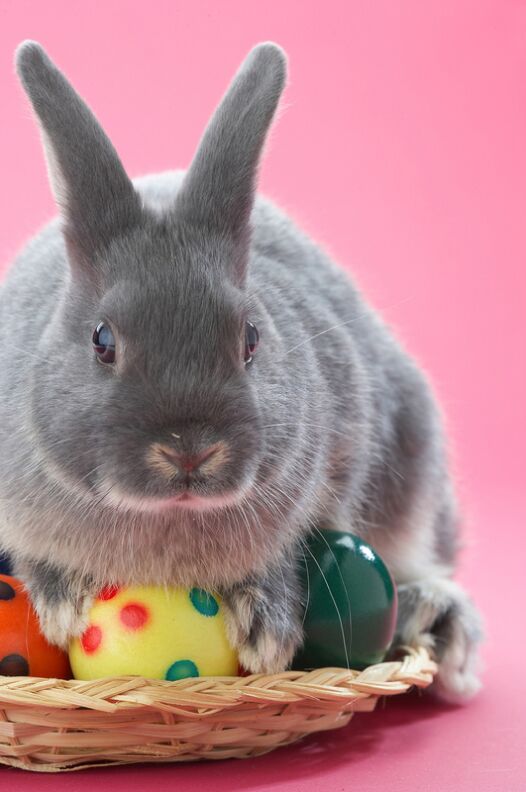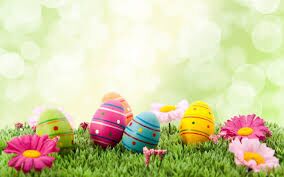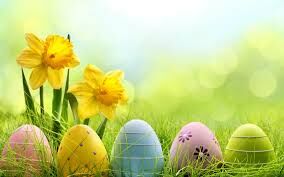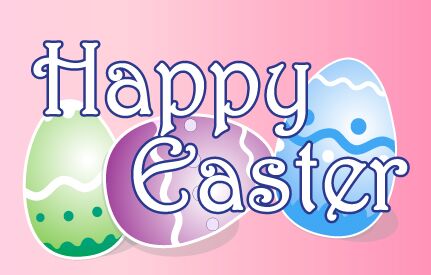by Sandra Frens
 Ahh spring… The time of year when many children anxiously await for a cotton-tailed friend to deliver treasures of small toys, eggs and candy. Easter generally falls at the peak of spring when life is renewed from winter’s cold shadow, and nature has begun to reinvigorate our world with her beauty. When we think of Easter, many of the symbols that come to mind are brightly colored eggs, baskets filled with goodies, and, of course, the mythical Easter Bunny. But how did this magical bunny get mixed in with Easter, and what role does the egg play?
Ahh spring… The time of year when many children anxiously await for a cotton-tailed friend to deliver treasures of small toys, eggs and candy. Easter generally falls at the peak of spring when life is renewed from winter’s cold shadow, and nature has begun to reinvigorate our world with her beauty. When we think of Easter, many of the symbols that come to mind are brightly colored eggs, baskets filled with goodies, and, of course, the mythical Easter Bunny. But how did this magical bunny get mixed in with Easter, and what role does the egg play?
Before the existence of the religious celebration known as Easter, Spring festivals were commonly held to venerate nature coming back to life: animals give birth to their young, trees and flowers come into bloom, and birds begin to have an abundance of eggs. This time of fruitfulness was often associated with rabbits, hares and eggs because of their links to fertility. When it comes to the Easter Bunny, his roots are drawn back to an early German heritage. The earliest mention of the Easter Bunny is made in the 16th century. (Actually, he was not a bunny at all, but a hare called “Osterhase” or “Oscher Haws.”) The idea of this legend spread to America with the coming of German immigrants who settled the Pennsylvania Dutch country in the 1700s. Their children carried on the ritual of building nests in their hats and bonnets hoping for gifts of eggs laid by the hare. These “nests” would be the prelude to the Easter Basket, and, due to the abundance of rabbits, the story naturally evolved into the Easter Bunny.
 As for the connection between the Easter Bunny and the Christian Easter celebration, the only feasible link is the egg. Some Christians view the egg as symbolizing Jesus emerging from the tomb, which shares in the idea that all life comes from an egg. Eggs are thus equated as the seed of life. Another connection is that eggs used to be forbidden during the time of Lent. To mark the end of Lent, people would paint and decorate eggs, then eat them in celebration for Easter. The connection between candy and Easter again started with the link to the egg.
As for the connection between the Easter Bunny and the Christian Easter celebration, the only feasible link is the egg. Some Christians view the egg as symbolizing Jesus emerging from the tomb, which shares in the idea that all life comes from an egg. Eggs are thus equated as the seed of life. Another connection is that eggs used to be forbidden during the time of Lent. To mark the end of Lent, people would paint and decorate eggs, then eat them in celebration for Easter. The connection between candy and Easter again started with the link to the egg.
 Easter is the second biggest candy holiday, and it started with the introduction of the chocolate egg, which was introduced in Europe in the 19th century. Other egg-shaped candy, known as jelly beans, would later be invented and even have a biblical connection as being a modern form of Turkish Delight. Even another popular Easter treat, Peeps (yellow marshmallow candy), have the egg connection because they are in the shape of chicks.
Easter is the second biggest candy holiday, and it started with the introduction of the chocolate egg, which was introduced in Europe in the 19th century. Other egg-shaped candy, known as jelly beans, would later be invented and even have a biblical connection as being a modern form of Turkish Delight. Even another popular Easter treat, Peeps (yellow marshmallow candy), have the egg connection because they are in the shape of chicks.
 The idea of the Easter parade may not have the egg connection, but it does loosely tie into the religious aspect of Easter. Originally, it began in New York City when the common people would come out to see the wealthy return home from Easter church services. When these socialites traveled down the streets (elaborately dressed in their Sunday nest hats and adornments), their stroll took on the appearance of a parade complete with spectators! This spectacle was where the song “In Your Easter Bonnet with All the Frills upon It” (popularized by Fred Astaire and Judy Garland in the 1948 movie Easter Parade) had its roots. To this day in Manhattan, Easter parades (not of religious significance) are still held, shutting down the city from 49th to 57th Street.
The idea of the Easter parade may not have the egg connection, but it does loosely tie into the religious aspect of Easter. Originally, it began in New York City when the common people would come out to see the wealthy return home from Easter church services. When these socialites traveled down the streets (elaborately dressed in their Sunday nest hats and adornments), their stroll took on the appearance of a parade complete with spectators! This spectacle was where the song “In Your Easter Bonnet with All the Frills upon It” (popularized by Fred Astaire and Judy Garland in the 1948 movie Easter Parade) had its roots. To this day in Manhattan, Easter parades (not of religious significance) are still held, shutting down the city from 49th to 57th Street.

The imagery associated with Easter was solidified during the Victorian Era, giving way to beautiful depictions of spring, colored eggs and religious symbols. Now that the imagery was in place, and, with the rise of the postage stamp, the stage was set for the first Easter Card greetings. The first Easter card was the idea of an English stationer who added a greeting to a drawing of a rabbit. In the beginning, they started out as mere postcards, but today they have transformed into an assortment of extravagant greeting cards that light up, contain pop-ups, play music and even grow into flowers! Through the sending of greeting cards, the conventions surrounding the Easter holiday flourished, and (in a sense) the greeting card was the seed (or egg) that helped this holiday spring to life in American culture.
 Easter Cards that can grow into flowers truly tie in all the aspects of this mishmash of traditions that make up the American Easter Holiday. The seeds in the cards represent life (mirroring the idea of the egg) and the growing flowers symbolize life renewed.
Easter Cards that can grow into flowers truly tie in all the aspects of this mishmash of traditions that make up the American Easter Holiday. The seeds in the cards represent life (mirroring the idea of the egg) and the growing flowers symbolize life renewed.
So these are some of the Easter Traditions and we all from Our Wonderful World wish you a very Happy Easter!


Wonderful story!!! I love the symbolic meanings and origins so much!